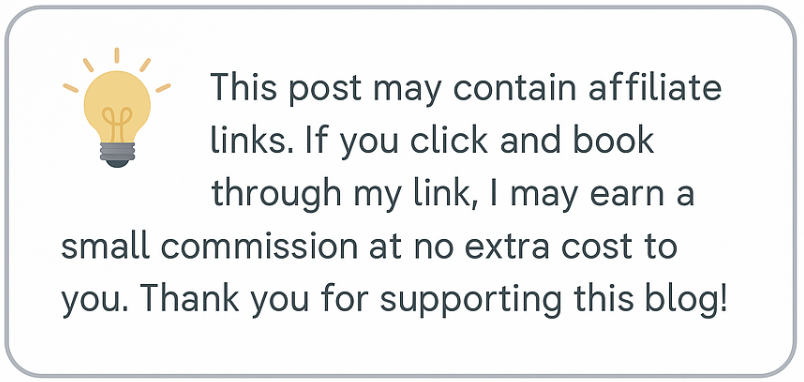Why Healthcare Matters for Retirees in Japan
When I first started thinking seriously about moving to Japan in my 40s, one of my biggest worries wasn’t about housing or visas—it was healthcare. I kept asking myself:
👉 “What happens if I get sick? Will I even be covered?”
It turned out I wasn’t alone. Many friends in their 40s, 50s, and 60s who dream of retiring in Japan had the same concern. Some already had health conditions like diabetes or high blood pressure; others were just worried about unexpected emergencies in a new country.
That’s why I wrote this guide. I’ll walk you through what Japan’s public system looks like, where retirees fit in, and how flexible options like SafetyWing Nomad Insurance can help bridge the gap—especially in those early years when things still feel uncertain.

1. A Quick Look at Japan’s Healthcare System
Japan has one of the world’s best healthcare systems: modern hospitals, skilled doctors, and affordable treatment compared to the U.S.
There are two main public insurance programs:
- National Health Insurance (NHI): For residents under 75 who aren’t on employer coverage.
- Late Elderly Medical Care System: For residents 75 and older.
💡 To join these programs, you need long-term residency and must register at your local city office. That means if you’ve just arrived, you may need private coverage while waiting.
2. The Challenge for Retirees in Their 40s, 50s, and 60s
If you’re moving to Japan in midlife or later, here’s what you may face:
- Not immediately eligible for NHI until your residence is registered.
- Higher private insurance premiums as you age.
- Need for coverage during the “transition” period before public insurance starts.
Even though Japan is affordable compared to the U.S., an ER visit can still be ¥30,000–50,000 ($200–350), and longer hospital stays can reach into the millions of yen if uninsured.
3. What Is SafetyWing Nomad Insurance?
SafetyWing Nomad Insurance was designed for digital nomads and long-term travelers, but it also works well for retirees.
Key Features
- Covers you worldwide (including Japan).
- Sign up after leaving your home country.
- Flexible: pay month-to-month, cancel anytime.
- Includes emergencies, hospitalizations, prescriptions, and even COVID-19 care.
👉 Check SafetyWing Nomad Insurance here
4. Monthly SafetyWing Premiums by Age
- Age 40–49 → ~$117 (≈ ¥17,400)
- Age 50–59 → ~$158 (≈ ¥23,500)
- Age 60–69 → ~$214 (≈ ¥31,800)
(Essential Plan; rates increase with age)
💡 Monthly Premium Snapshot: SafetyWing vs. NHI
📌 Quick reference for retirees in their 40s, 50s, and 60s
| Age Group | SafetyWing Nomad Insurance (Essential Plan) | Japan NHI (example: ¥4M income, Tokyo) |
|---|---|---|
| 40–49 | ~$117/month (≈ ¥17,400) | ~¥25,000/month (varies by ward) |
| 50–59 | ~$158/month (≈ ¥23,500) | ~¥25,000/month (varies by ward) |
| 60–69 | ~$214/month (≈ ¥31,800) | ~¥25,000/month (varies by ward) |
Takeaway: SafetyWing is usually cheaper in your 40s and 50s, but by your 60s it may cost more than NHI.
5. What’s Covered (and What’s Not)
- Hospitalization, doctor visits, prescriptions
- Emergency evacuation
- Unexpected illness and injury
- ⚠️ Pre-existing conditions are not covered under the Essential plan
Special Note on Diabetes and Chronic Conditions
If you already have diabetes before joining, it is not covered under either SafetyWing plan.
- Essential Plan: excludes diabetes entirely.
- Complete Plan: will cover new-onset diabetes (diagnosed after your policy starts).
💡 Once you join Japan’s NHI, diabetes and other chronic conditions are fully covered at subsidized rates.
6. Understanding Japan’s National Health Insurance (NHI)
NHI is run by municipalities and covers about 70% of medical costs, leaving you to pay 30% at the hospital.
Who Must Enroll?
- All residents with visas longer than 3 months (unless on employer coverage).
When to Apply?
- Within 14 days of registering your residence or losing employer coverage.
How Much?
Premiums vary by city/ward. Example: someone with an annual income of ¥4 million in Tokyo might pay around ¥25,000 per month.
7. Find Your Exact Premium: NHI Simulators by Ward
- Ōta Ward (大田区) → Premium Simulator
- Edogawa Ward (江戸川区) → 2025 Simulator
- Shibuya Ward (渋谷区) → Estimate Sheet
- Setagaya Ward (世田谷区) → Excel/PDF Simulation
- Nerima Ward (練馬区) → Mobile Calculator
Tip: Search 「[Ward name] 国保 保険料 シミュレーション」 for your city’s calculator.
8. Combining SafetyWing With Japan’s Public System
Many retirees use this simple strategy:
- Start with SafetyWing during your first year (while residency stabilizes).
- Switch into NHI once you’re eligible—premiums are lower long-term.
- Keep SafetyWing if you plan frequent international travel (NHI only covers you in Japan).
9. Real Experiences With SafetyWing
- ✅ Easy sign-up, even if already abroad.
- ✅ Affordable compared to traditional expat insurance.
- ❌ Reimbursements can take time; not cashless.
- ❌ Pre-existing conditions often excluded.
Some retirees love its flexibility, while others prefer to move quickly into NHI once eligible.
10. My Personal Take
If I were advising a retiree friend:
- In your 40s & 50s: SafetyWing is affordable, flexible, and makes sense as a bridge.
- In your 60s: Consider moving into NHI as soon as possible, since SafetyWing costs rise with age.
- For chronic conditions like diabetes: Plan for NHI—it’s the long-term safety net you’ll want.
👉 Get a SafetyWing Nomad Insurance quote here
Final Reflection
If I could go back to my 40s and give myself one piece of advice about moving to Japan, it would be this: don’t let healthcare worries stop you from living the life you want.
Yes, the system here can feel confusing at first. Yes, premiums change depending on your age and ward. But there are options—whether that’s starting with SafetyWing while you settle in, or enrolling in Japan’s National Health Insurance once you’re eligible.
Looking back, I realize that peace of mind is worth every yen. And once that worry was out of the way, I had so much more energy to actually enjoy the things I came here for—like exploring hidden countryside towns, connecting with locals, and watching cherry blossoms bloom year after year.
If you’re in your 40s, 50s, or 60s and dreaming of Japan, my honest advice is: plan the healthcare part now, so it doesn’t hold you back later. You deserve to live your retirement years with confidence and joy. 🌸

